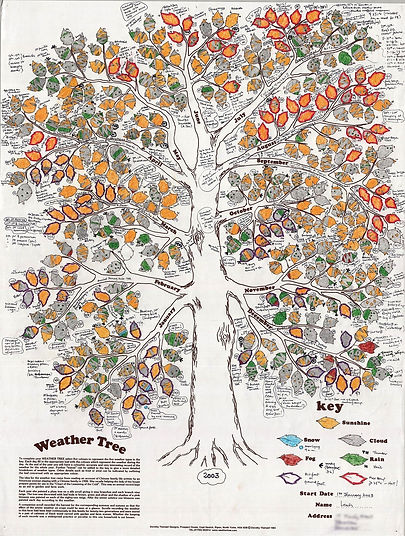
History of the Weather Tree Posters
Artist Dorothy Thelwall (1945 - 2013) designed the Weather Tree poster in 1983.
Dorothy was a keen gardener and observer of the weather. She developed the idea of the weather tree from a memory of a book that she had encountered as a child. The book The House of Exile by American Nora Waln, included an account of Chinese family life in 1920. In the book, Nora Waln recalls helping the lady of the house prepare paints for use in the "Chart of the Lessening of the Cold". This was an annual record kept as an aid to garden and farm work. Each year she painted a plum tree on a silk scroll, giving it nine branches and each branch nine twigs. The tree was decorated with leaf buds in brown, green and silver and the shadow of a pink blossom was painted on each of the eighty-one twigs. After the winter solstice one blossom was painted each day according to the weather.
A companion scroll recorded the harvest for the corresponding summer and autumn so that the effect of the winter weather on crops could be seen at a glance. Scrolls recording the weather in this form had been kept continuously in this family for twenty-two generations and were stored in a pair of cabinets of black wood carved with garden and farm scenes.
Dorothy's weather poster has remained popular over the years, and generations of people across the world have made keeping a Weather Tree poster a part of their daily lives.
Weather trees are a little-known way of recording the daily and seasonal changes in the weather for people around the world. Anita Roy talks to Simon Leach about his love of weather trees, why he has coloured in a leaf a day for the past twenty years and what the British love of the weather tells us about our national character.
